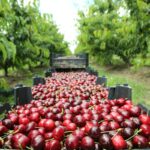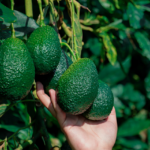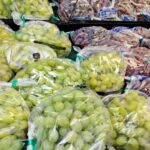Report: Criminal networks, led by European mafias, jeopardize Latin American fruit exports

A new report from Europol on the European Union’s most threatening criminal networks found drug trafficking is involved in half of them and that illegal enterprises have taken advantage of numerous legitimate industries, including the fresh produce trade.
Latin American exporters have told FreshFruitPortal.com that they are on alert, as major narcotic interceptions hit fruit shipments in ports across the globe.
The report from Europol, the law enforcement agency of the European Union, says criminal networks have inventively made use of legal business structures to facilitate or conceal their criminal activity and launder their money, a scheme that appears to have infiltrated fruit exports.
One example highlighted in the report involves banana exports from Ecuador, where drug trafficking networks have targeted some fruit companies.
The case speaks of an Italian businessman of Argentinean origin residing in Marbella, who uses his companies to conceal both drug trafficking and money laundering activities.
“He manages several companies, including one importing bananas from Ecuador to the EU,” the report says. “An Albanian accomplice, based in Ecuador, takes care of the import of cocaine from Colombia to Ecuador and the subsequent distribution to the EU.”
Drug interceptions in banana imports in the U.K. and Europe have made headlines throughout the year.
In February 2023, Ecuadorian authorities found 8.8 tons of cocaine in a banana shipment bound for Belgium. They said the shipment would have been worth around $330 million at destination.
In August of that year, Spanish authorities made their biggest cocaine haul yet: 9.5 metric tons hidden among cardboard boxes of bananas from Ecuador.
The crisis created by drug cartels is not only affecting the industry itself, but security in the country in general.
AP news reports that shootings, homicides, kidnappings, and extortions have become part of daily life, particularly in the Pacific port city and banana-shipping hub of Guayaquil.
Jose Antonio Hidalgo, executive director of the Ecuadorian Association of Banana Exporters (AEBE) says the established, legal industry in Ecuador is a victim of this issue. He says the responsibility comes not only from the source, South America, but from European authorities who are not doing enough to reduce drug consumption in the region.
“This has to be treated as a public health problem and drug addiction has to be declared a public health crisis in the European Union,” Hidalgo told FreshFruitPortal.com.
“They share a responsibility for this problem, so they have to start looking in the mirror, and decide what they will do to reduce demand for cocaine,” he said.
Hidalgo touched upon the fact that the operations of these criminal networks are borderless, meaning they operate internationally.
The Europol report also indicates that the most threatening criminal networks exert strong control and focus over their criminal operations. That is the case for farmers in Mexico, where producers and exporters of multiple fruit products have been extorted and pressured to pay fees to criminal organizations.
A separate report by the Dutch police research group, Politie & Wetenschap, warned that parts of the avocado trade in Mexico, Peru, Colombia, and Chile are being taken over by gangs.
Belgo-Dutch criminal networks, which are mainly active in cocaine trafficking, operate near the ports of Antwerp and Rotterdam, the report explains, where many illicit shipments coming from South America have been discovered.
One of the consequences for Latin American fruit exporters has been tighter security for imported containers at the Rotterdam port.
The Europol report indicated these criminal operations could span over 40 countries globally.
Large-scale trafficking
Major cocaine trafficking from Latin America to Europe is financed by criminal networks from the republics of Slovenia, Croatia, Bosnia and Herzegovina, and Serbia and Montenegro, Europol found.
“They have also established a very strong presence in Latin America by exploiting corruption opportunities in and around key ports and in shipping companies,” the report says. “They exercise end-to-end control over the supply of cocaine.”
The Europol findings add that some of these groups are also specialized and/or heavily involved in excessive violence, professional kidnappings and executions, corruption, money laundering, trafficking of weapons and explosives, and forged documents.
Violence is mainly used as retaliation for lost or un-finalized drug shipments, but also to gain dominance over the territory or the supply chain, the report says.
Criminal networks with Moroccan key members also usually operate in cocaine trafficking from Latin American countries.
Who runs drug trafficking from Latin America?
Despite South America being the main producer of cocaine in the world, the Europol report says that key members often lead criminal networks that operate in these countries from Albania, Belgium, Italy, the Netherlands, Portugal, and Spain.
Only 1 out of 10 criminal networks include a national of a Latin American country, the report adds.
AP News reported about a vendor from Guayaquil, Ecuador, who said, “This is everyone’s responsibility: the person who transports it, the person who buys it, the person who consumes it.”
“They all share responsibility,” she said. “They have ruined our country.”
The report found that most drug trafficking networks specialized in cocaine are mainly active in EU member states, such as Belgium, Germany, Italy, the Netherlands, and Spain.
The presence of important ports in these countries, often with direct connections to drug-producing countries, plays a major role in their prominence.
Drug – and particularly cocaine–trafficking networks are very flexible and operate using various modi operandi or through multiple locations, the report says.
They hide the drugs in the physical structure of containers, or hide the drugs in various types of legal goods.
Additionally, they organize drug transports from various points of departure to different ports of arrival. In addition to maritime travel, they also use air or road transport to move drugs.
The report found that cocaine trafficking represents 113 of the most threatening criminal networks identified in Europe, the most out of all types of drug trafficking.















































